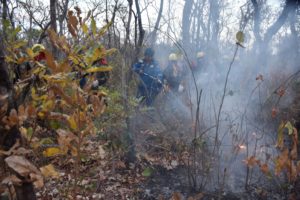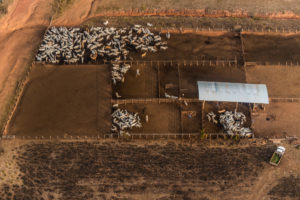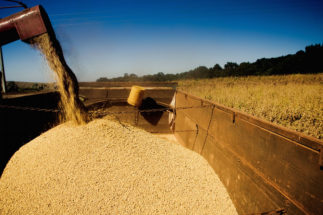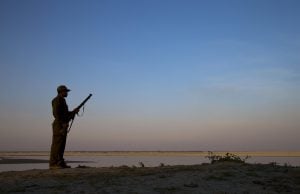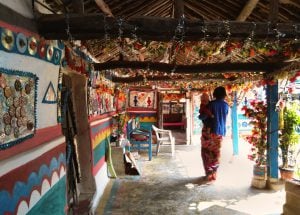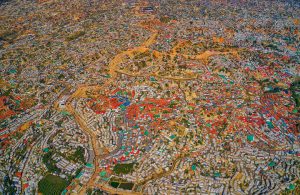Brazil broke records for beef exports last year thanks to Chinese demand, and is expected to do so again in 2020. The boom was driven by JBS, the largest meatpacking company in the world, which announced 2019 as the best year in its history.
Last year, JBS sent 27.3% of its exports to mainland China and continues to expand its business in the region. In January, it signed an agreement with WH Group, a Hong Kong retailer, that will connect it to 60,000 Chinese stores.
Environmentalists see this as a chance for China to exert its influence and indirectly help reduce greenhouse gas emissions, honouring its Paris Agreement commitment.
“Requiring traceability of meat and not accepting products linked to illegal deforestation is what we expect from Chinese buyers”, says Carlos Souza, coordinator of the monitoring programme at the NGO Imazon.
Deforestation accounts for 44% of emissions in Brazil, and a sharp increase in deforestation in the Brazilian Amazon this year is expected to cause an even more intense fire season than the one that shocked the world in 2019.
But while meat with connections to illegal deforestation is beginning to come up against barriers in markets like Europe, China does not yet seem to be adopting the same policy.
53.2%
The increase in sales of Brazilian beef to China in 2019
“The country will not stop buying meat because there is deforestation”, says Charles Tang, president of the Brazil-China Chamber of Commerce. “It is concerned about environmental conservation, but it does not interfere in domestic matters in countries”.
This reduces pressure for solutions on giant companies like JBS, which has a history of corruption, faces accusations of purchasing from illegal farms, and admits to problems monitoring its suppliers.
JBS states that it monitors its 90,000 direct suppliers (50,000 in the Legal Amazonia region) using satellite images; 9,000 farms have been blocked due to illegal status.
An audit conducted by DNV, which was hired by JBS in 2019, concluded that all the company’s direct suppliers in the Amazon meet socio-environmental criteria; this was determined by looking at a sample of suppliers, not including any indirect suppliers.
In other words, the company does not need to know where its supply chain actually begins. And cattle ranchers are not always involved in the full cycle, from the birth of calves to slaughter. In some cases, different people are responsible for raising and fattening the animals.
“The industry has not yet been able to address the indirect supplier problem”, says Erasmus zu Ermgassen, head researcher at the Trase platform, an independent effort to improve transparency in Brazilian livestock ranching.
Ermgassen recognises that the industry has made efforts, but states that it “has been slow in adopting solutions” and that today it only monitors “the tip of the iceberg”.
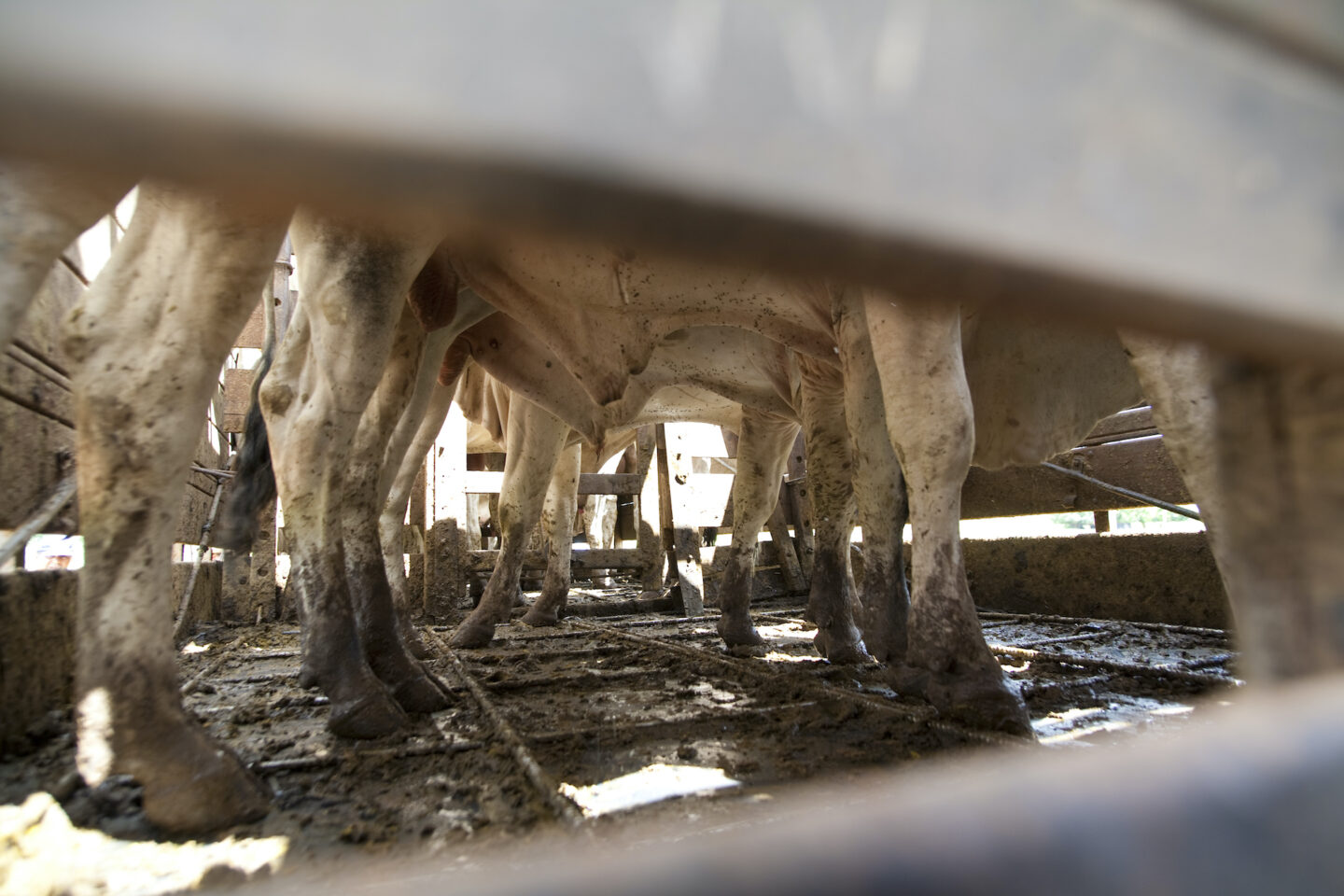
One option would be to tag the animals. That is done in Uruguay and the European Union but only 2% of the Brazilian herd are tagged. Another would be to track movement through the animal transit certificate (GTA), which is a required document in Brazil.
JBS reports that it is investing in four projects at the same time to track indirect suppliers, including tracking using the transit certificate, and expects a solution in the medium term, without specifying a date.
Growing deforestation
Cattle and soybeans (which are fed to cattle) cause the most pressure on the frontiers of the Cerrado and the Amazon. In 2019, deforestation in the Cerrado let up slightly, while in Amazon it hit record levels. In the region, 80% of deforested areas become pasture.
This year, the destruction continues to gain speed in the Amazon, according to data from the Brazilian federal government and Imazon. Fires and illegal deforestation tend to take place in the dry season, starting in May. But the growth started earlier.
“It is concerning, because during this first quarter of 2020 we are seeing an increase, even in the rainy season”, added Carlos Souza. “If this trend continues, by the end of the year there will be an increase over last year”.
In 2019, the number of fines issued for illegal deforestation was the lowest in 15 years.
Deforestation not only threatens the forest and the climate, but Brazilian agricultural production itself. “The Amazon region is responsible for most of the rain in the productive region in southern Brazil, while various rivers originate in the Cerrado”, says Nathalie Walker, director of the Tropical Forests and Agriculture division at the non-profit NWF.
The federal government’s anti-environment rhetoric has made things worse. In 2019, the number of fines issued for illegal deforestation by Ibama, the government’s environmental protection agency, was the lowest in 15 years. With the arrival of the coronavirus, Souza says that inspections are even less frequent.
One of the main actions taken against the deforestation caused by cattle ranching was the signing of a deferred prosecution agreement known as the Meat TAC in 2009. At that time, a number of Brazilian meatpacking plants committed to not buy cattle from illegally deforested areas.
A decade later, the Federal Public prosecutor’s office in Pará reported that no company that purchased cattle from the Amazon was able to certify that the cattle came from non-deforested areas.
The meat triangle
In December, 50 organisations warned of the fragile state of inspections at intermediaries of JBS and the other massive company in the industry, Marfrig, which had more modest profits in 2019 but also rode the wave of Chinese demand; Marfrig has a total of 13 plants certified to export to China, the highest number in South America.
Like JBS, Marfrig adopted satellite inspections and hired DNV, which for seven years has not found any irregularities in the multinational company’s suppliers. Since 2013, Marfrig has requested that its suppliers provide data on indirect suppliers, but the audit shows that they “are not systematically verified”. Half of Marfrig’s cattle purchases come through middlemen.
Minerva Foods, which also has profited from the Chinese market, is the third large player in the Brazilian meat industry. Together, these three companies account for two-thirds of exports.
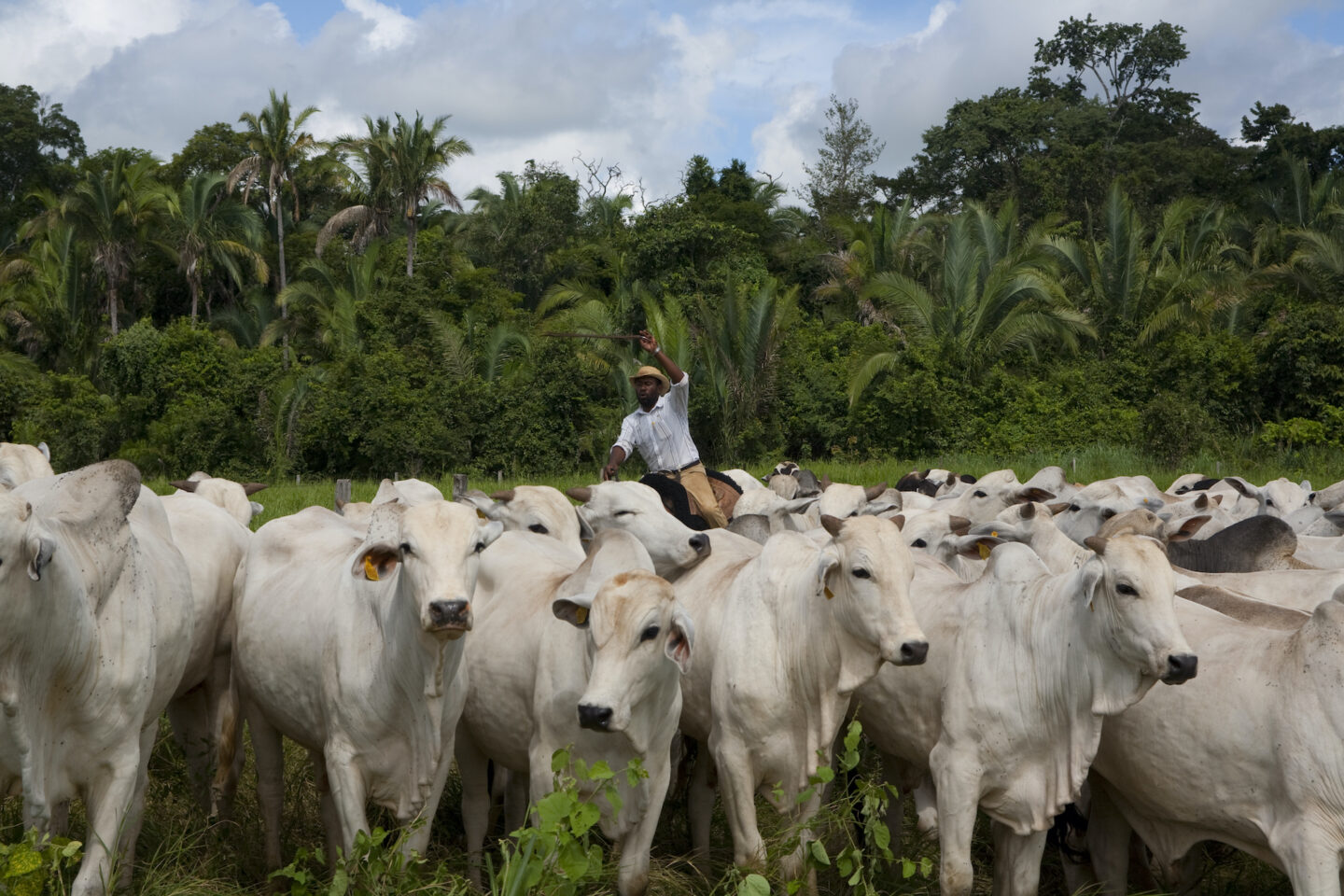
Trase assesses the deforestation risk exporters face, according to the region where the cattle they sell are raised. JBS is responsible for 36% of the total deforestation risk for its beef exports, since most come from Amazonia. Marfrig and Minerva account for roughly 15% of the total risk.
Minerva monitors its 8,000 direct suppliers in the Amazon, but also recognises the bottlenecks involved in tracking the entire supply chain. It is considering Visipec, a tool for cross-checking data developed by the University of Wisconsin and NWF.
Nathalie Walker says that Visipec is available at no charge to all Brazilian meat processors. The platform tracks indirect suppliers in three states within Legal Amazonia and is being expanded.
Chinese risk
The Chinese eat less meat than the Americans, Europeans and Brazilians. But growing incomes are changing this habit, and swine fever outbreaks in mainland China have hastened the search for foreign markets. As a result, Brazil increased its sales to the region by 53.2% in 2019.
The Brazilian market still consumes 75% of the meat it produces, although there are signs of reduction. In the meantime, the stronger Chinese demand has put environmentalists on the alert.
Trase concluded that in 2017, meat production shipped to Hong Kong was linked to 27% of the deforestation risk of all exports. The risk for continental China was 7%, but had grown.
In 2019, the region licensed dozens of new meatpacking plants for export, with at least 14 in Legal Amazonia. Between 4.1% and 6.5% of the cattle from Amazonia are shipped to China.
“The Trase data confirm that these meatpacking plants have a much higher deforestation risk than those that used to supply continental China”, explains Ermgassen.


